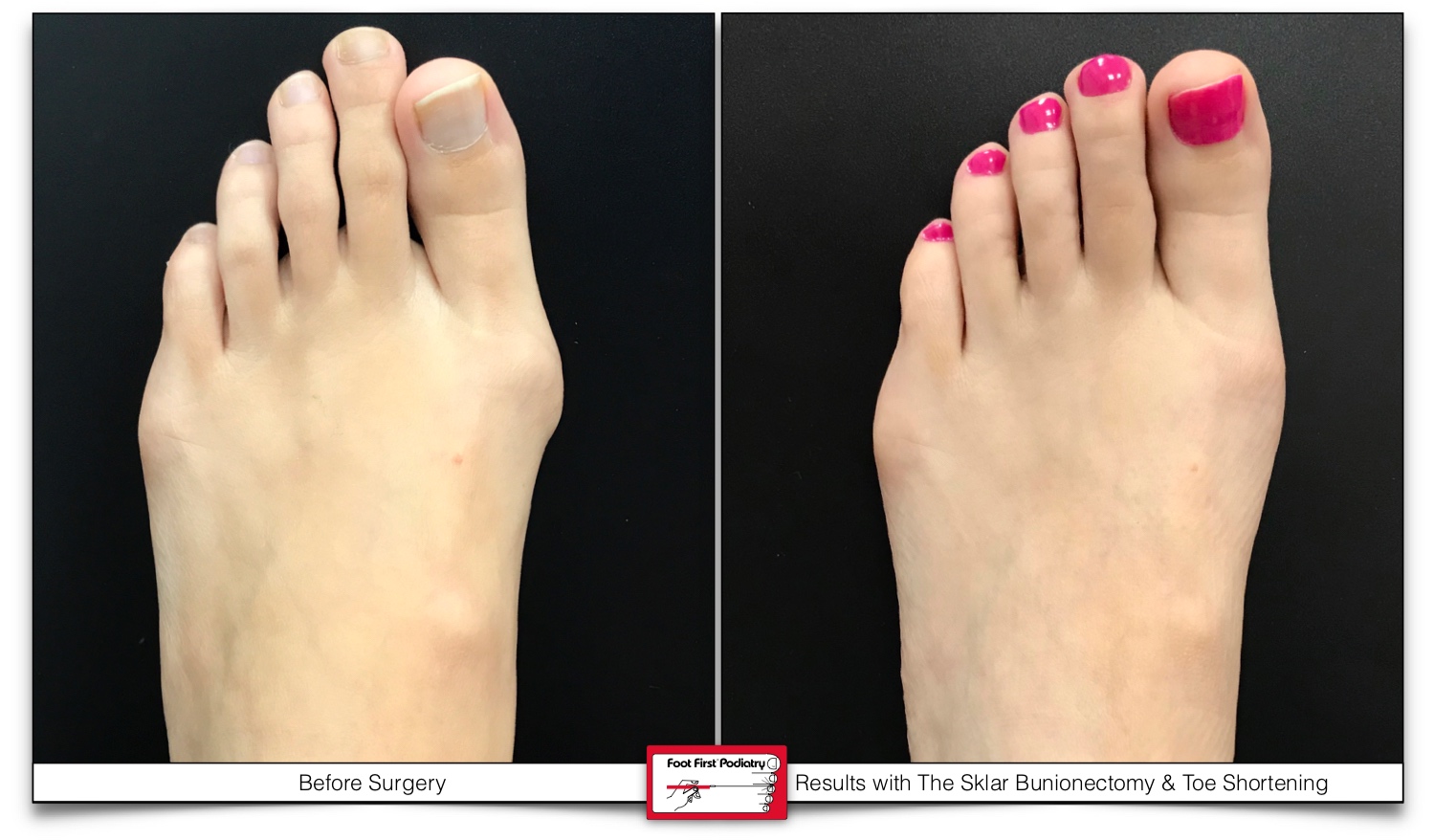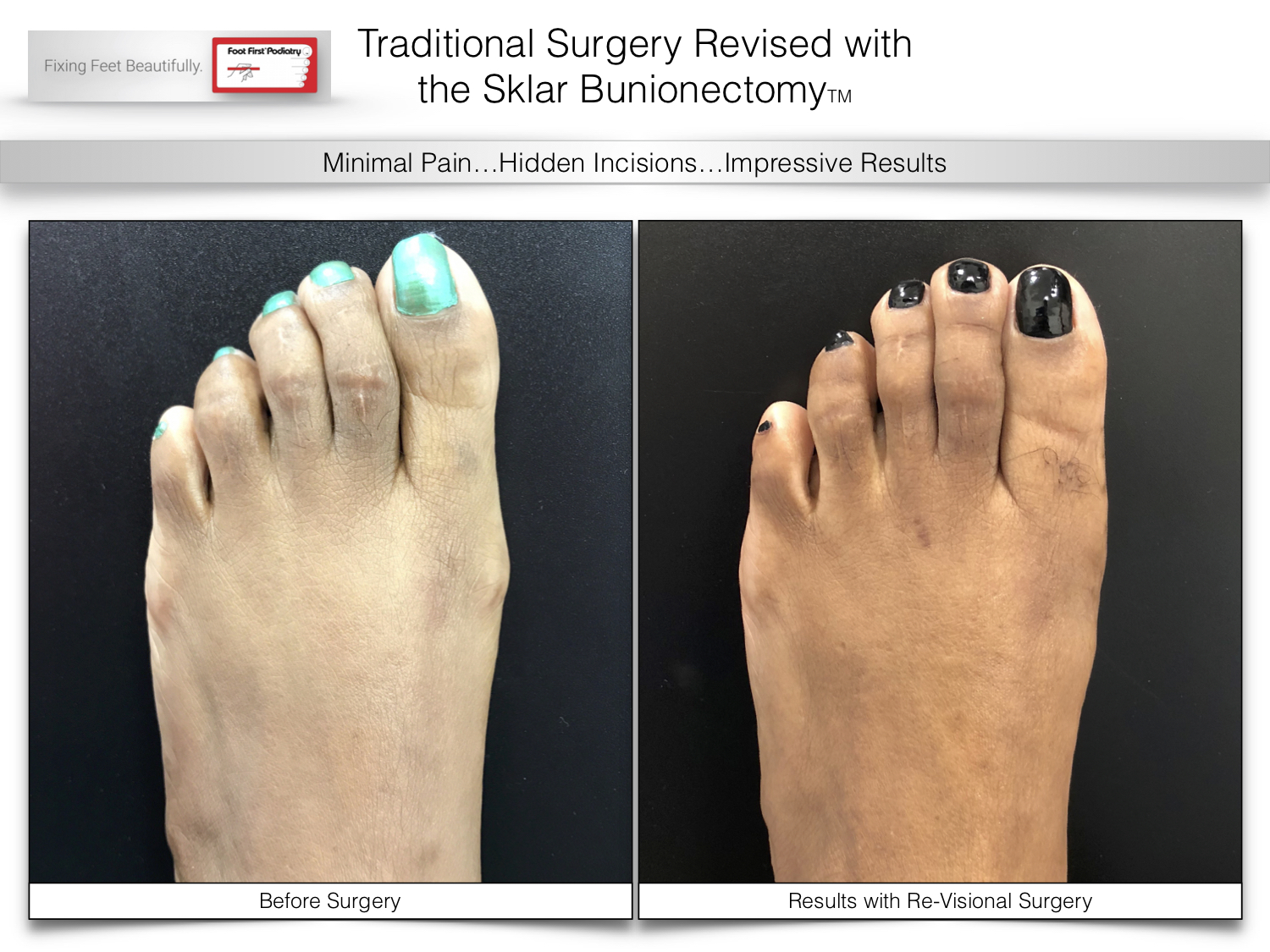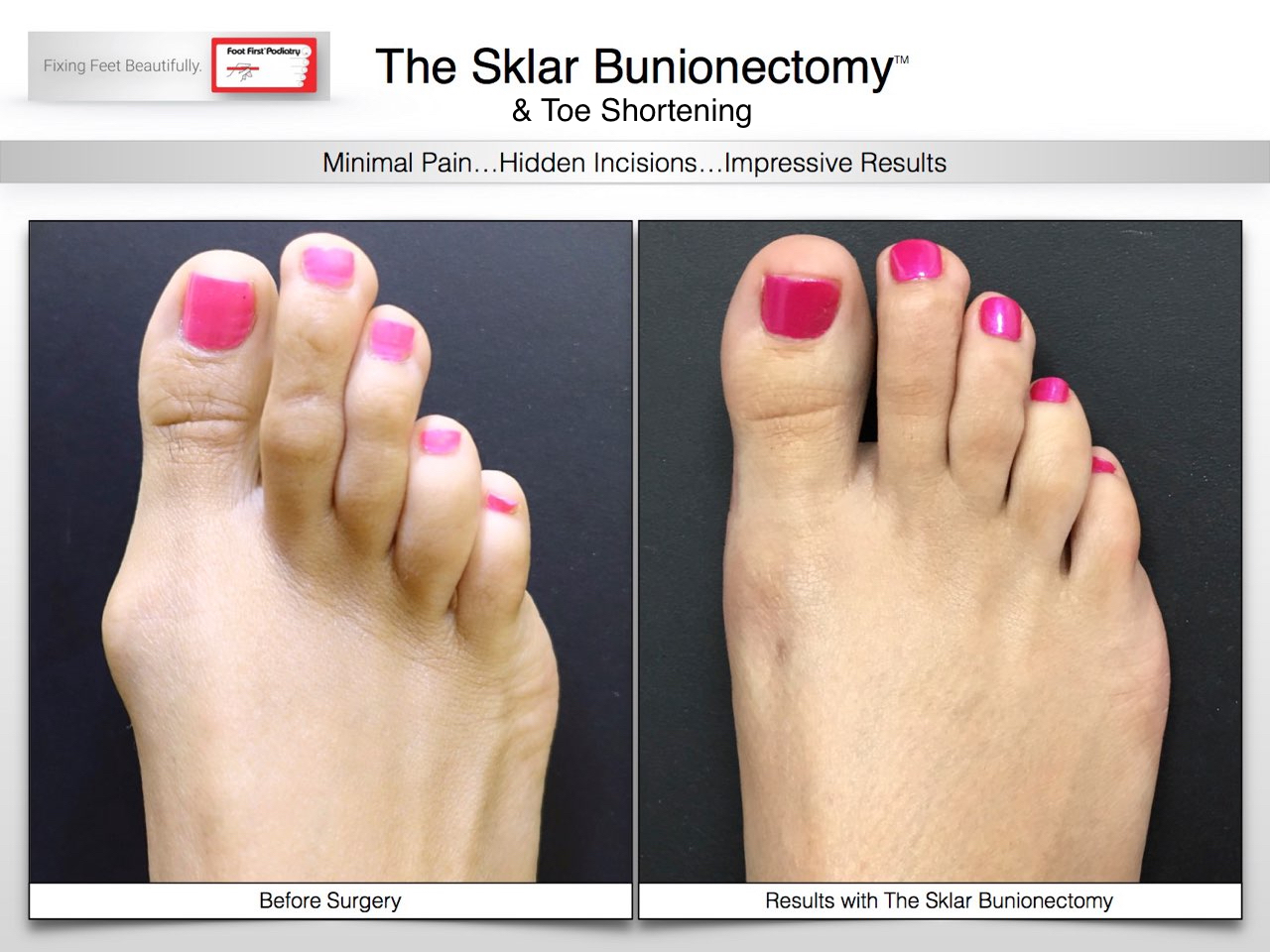Before & After results with the Sklar Bunionectomy & Toe Shortening Procedure
Long toes can be troublesome for a patient for many reasons. Toe shortening is a unique procedure that we perform alone, or along with our bunion surgery, the Sklar Bunionectomy™.
Toe shortening has a similar recovery to our bunion surgery where you are able to weight bear immediately, and get back into a gym shoe in a short amount of time.
You may wonder why some people request to have their toes shortened. Long toes can be problematic not only cosmetically, but also functionally. A long toe extends past the other shorter toes so it may hit the end of the shoe first, causing the toe to curl and jam. This can cause a hammertoe over time, or a painful corn on top of the toe as it rubs on the shoe. The constant jamming at the end of the shoe can also cause the toe to dislocate over the metatarsal bone. This causes a painful callus on the ball of the foot. This also occurs when the metatarsal bone behind the toe is too long as well, and would require an additional procedure to the toe shortening to fix.
If you have a bunion along with long toes, we always correct the bunion with the toe shortening procedure. This is because if we do not correct the bunion deformity, the big toe pushes against the smaller toes as they heal. This eventually causes them to heal crooked, or become crooked over time. This is why we always address the bunion deformity as well. The image to the right is a patient who had her toes shortened by another doctor without fixing her bunion. We then had to correct her bunion along with her crooked toes.
During our initial consultation we determine which toe shortening procedures you need by where you are feeling pain, and with X-rays of your feet. We also determine how much you want your toe shortened. You tell us approximately where you envision your shortened toe to be in comparison to the other toes. For instance, some patients still want their second toe to be in line with the big toe, or some patients want their second toe to be shorter than the big toe. This is where the surgery becomes more of an art than a science, because everyone has a different opinion of what they consider beautiful.
Surgery for toe shortening is done under local anesthesia (awake with numbing of the toes) or twilight anesthesia (asleep) through a small incision on the side of the toe. We remove a section of bone that we determine before surgery. How much bone we remove will depend on how much your toe needs to be shortened. We then insert a wire to hold the toe while it heals. The wire will be underneath the skin and will NOT stick out the ends of your toe. The wire is not meant to be permanent and will need to be removed at a later date. We then close the incision usually with only one stitch, and allow you to recover.
After toe shortening surgery patients usually experience pain for three days. They are able to weight bear immediately and are wearing a surgical shoe. Patients wear the surgical shoe for three weeks, and also have to keep the foot clean and dry during that time. At three weeks the sutures will be removed and patients will be allowed to wear a gym shoe. At 8-12 weeks, depending on how the bones are healing, we will numb the toes to remove the pin inside of the toe. Then patients are allowed to return to exercise like running, jumping, and wear different shoes.
Toe shortening surgery is very successful, although it will never be perfect. Healing is determined by the success of the surgery, genetics, and compliance with instructions all combined. With all the surgeries we tell our patients that toes will cosmetically look ugly for 4-6 months before they start to see their true result. This is how long it takes for most patients’ swelling to come down. Some more serious complications of toe surgery are, but not limited to, floating toe, crooked healing, creases/scarring to the skin, a swollen toe, numbness, or a toe that is painful. Usually if we work together by us performing good surgery, and the patient follows instructions and genetically heals well, we all end up with a beautiful result.
Our unique toe shortening procedure offers patients the chance to lessen their pain, and have a beautiful looking foot. Our before and after pictures showcase our most beautiful results. As stated before, toes take 4-6 months on average to become beautiful. All after photos posted are usually taken at 6 months to 1 year after having toe shortening surgery.
For more information about our unique Toe Shortening procedure or to view additional before and after results, visit www.footfirst.com.





